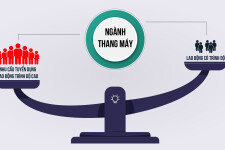Elevator is a very popular means of transporting people and goods in the world and in Vietnam. Although considered a safe means of transport, elevators still have many potential risks for users.
In terms of frequency of use, around 325 million people ride elevator every day in the world. Every three days, all the elevators in the world carry as many people as the entire population of the earth. However, the following statistics may surprise readers about the level of safety. In a developed country as the UK, each elevator breaks on average at least 4 times a year, taking an average of 4 hours to repair for each failure. Statistics also show that, for every 6 elevator incidents, there is a case where someone is trapped inside and needs to be rescued.
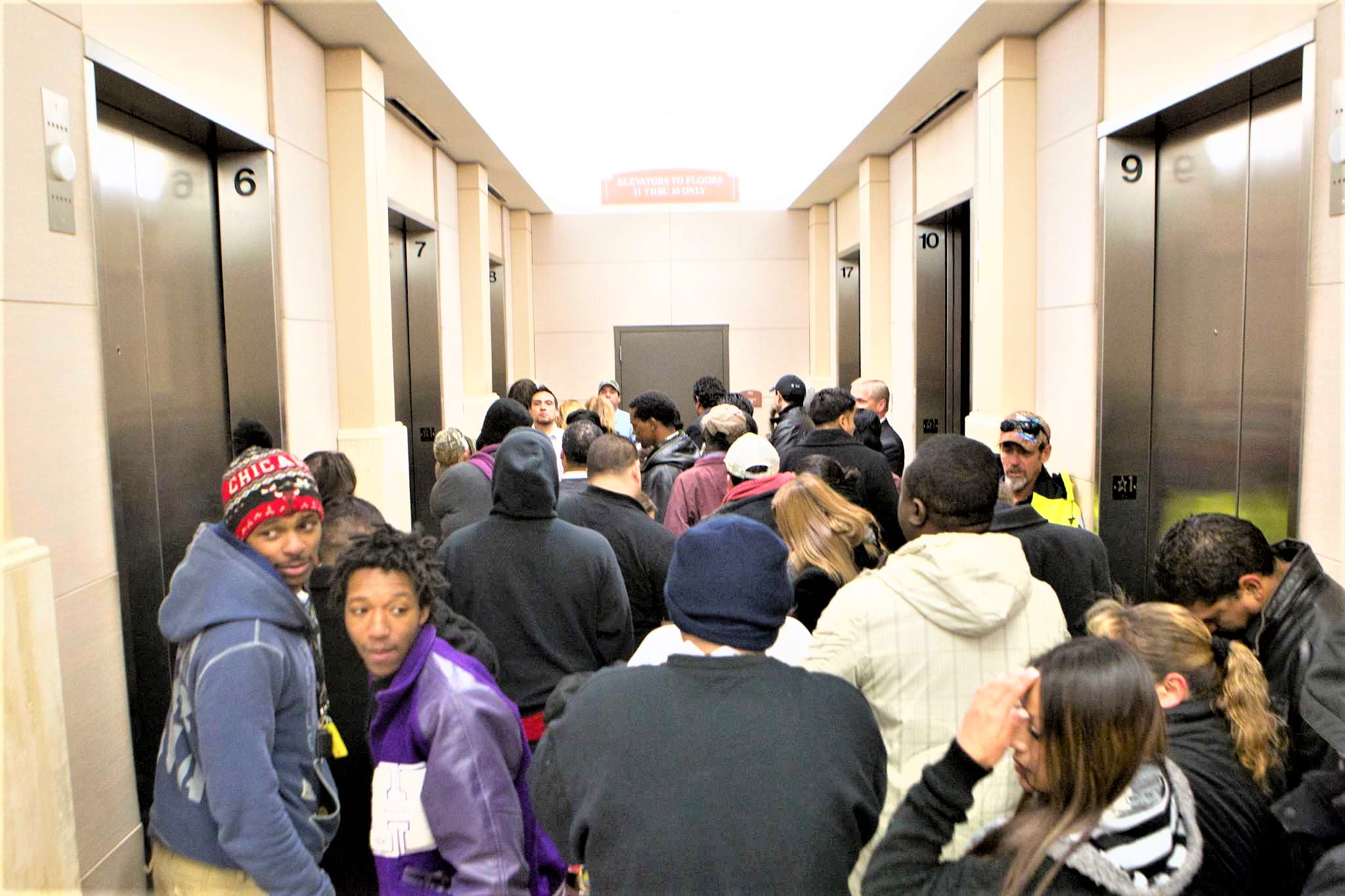
Elevators are the most common means of transportation in the world
In Vietnam, in 2020 alone, according to incomplete statistics across the country, there have been many incidents and accidents of elevators and escalators, including 8 accidents, serious incidents, and 6 deaths. In 2022, in the serious elevator incidents, there were some fatal cases such as the accident on May 25 in Ba Dinh district, Hanoi, causing 2 elevator workers to die while working. On July 26, 2022, another accident caused a woman to die when she fell into shaft at Can Tho City Children's Hospital. On August 29, a group of 9 people while riding an elevator at a 4-storey building in District 5, Ho Chi Minh City was stuck in the elevator for about 45 minutes, suffocating, fortunately rescued. There are other unreported accidents as well.
Many experts believe that, when studying the dangers of elevators, it is not the statistics of the quantity but the dangerous nature of the elevators due to the specific operating environment, production, installation, and operation processes, etc. . are potential risk. The danger and risk increases for violations of regulations on standards, regulations, maintenance and inspection.
It should be emphasized that, according to Circular No. 01/2021 of the Ministry of Labour, Invalids and Social Affairs, elevators are classified in the "List of products and goods potentially unsafe". However, the registration of production and business of this item is quite easy, not bound and controlled by specific conditions as the automobile industry with similar characteristics.
Referring to developed countries and territories in Asia such as Korea, Japan, and Hong Kong, these countries have created a strong legal corridor for elevator safety management.
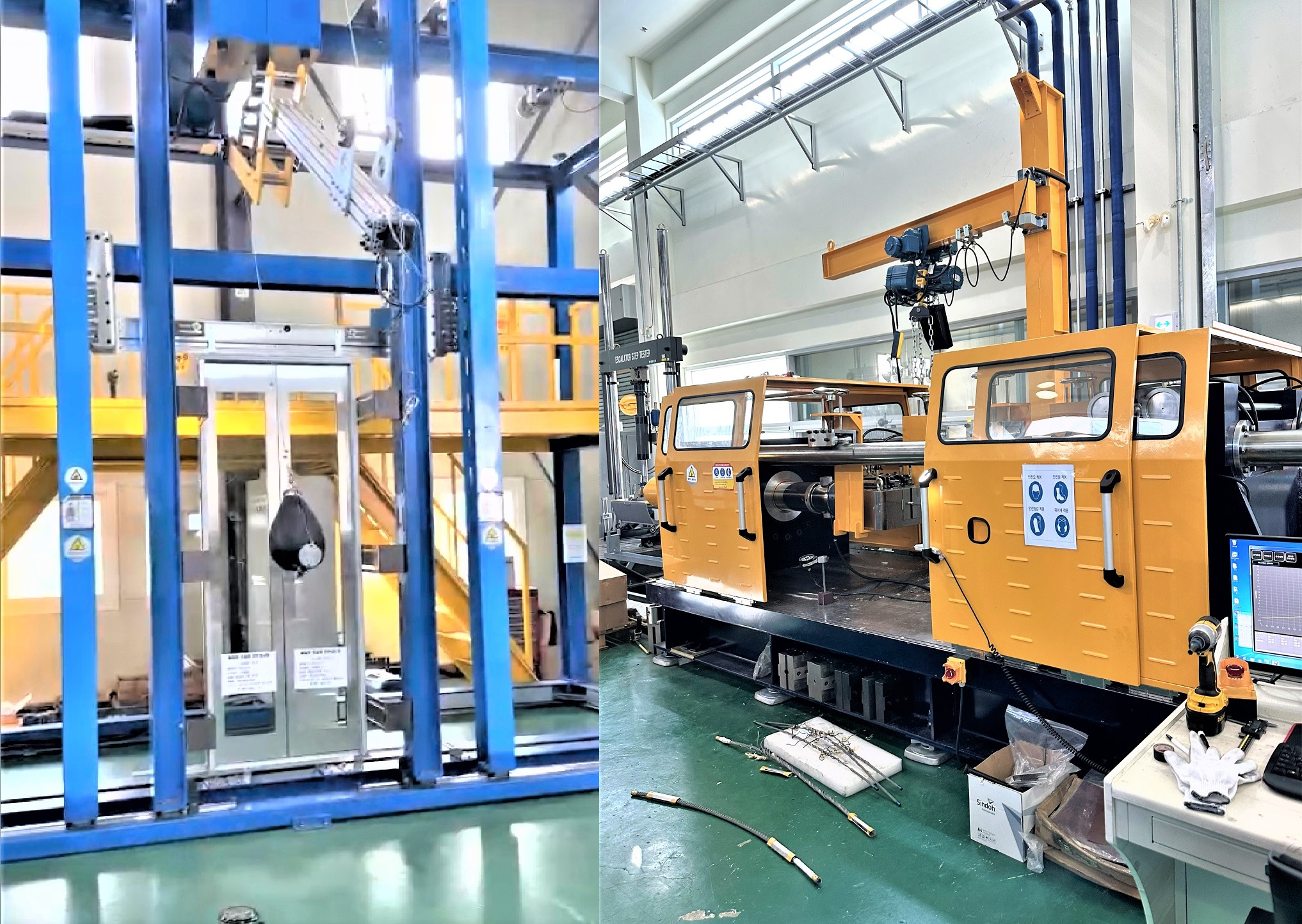
Safety inspection lab for elevator components and equipment in Korea.
In Korea, elevators are comprehensively managed based on the Elevator Safety Management Act, which was born in 2009. This law strictly, specifically, comprehensively regulates issues related to elevators, including strict sanctions for violations.
All manufacturing enterprises and elevator maintenance enterprises must be qualified and licensed by the governing ministry to operate. Safety inspection, testing, and product certification are carried out and managed by the Korea Elevator Safety Agency (KoELSA).
Regarding sanctions, according to Article 80 of this Law, any person who is found to commit fraud in registration of production business, conducts unregistered production business, cheats to obtain safety certification, has a violations; the elevator operator does not pass the safety inspection; those who cheat to get a maintenance business registration, unregistered maintenance business are sentenced to up to 3 years in prison and a fine of up to 30 million won (about 560 million VND)…
Thanks to a strong legal corridor and strict management and supervision, promoting people's awareness of safety when using elevators, the number of serious elevator accidents in Korea has decreased sharply. The year 2016 has dropped to 52.3% compared to 2013.
In Hong Kong, Elevator and Escalator Ordinance was applied from December 17, 2012. This ordinance introduces a series of enhanced controls, strengthens the registry of elevator and escalator employees, and increases penalties for elevator safety violations.
In Japan, the production, circulation and operation of elevators are regulated by the Japanese government through the Ministry of Land, Infrastructure, Transport and Tourism (MLIT). MLIT sets standards for the design, manufacture, installation and maintenance of elevators, and oversees their testing and certification to ensure compliance with safety regulations.
It can be said that the construction, enforcement, and supervision of enforcement by strong legal corridors related to elevators has made an important contribution to improving safety, reducing dangers and risks for users.
Is the elevator industry suitable to be included in the list of conditional occupations with the characteristics as analyzed above? To solve this problem, Elevator Magazine discussed with law-making experts who have extensive experience in the field of occupational safety to have an independent and objective view.
According to Dr. Pham Trong Nghia, Member of the Social Affairs Committee of the National Assembly, Vietnam's elevator market is a new but rapidly growing market, creating great potential. But that's why, along with the advantages, there will be many challenges, posing the problem of how the government management mechanism for this industry is to ensure healthy, transparent and safe development.
“Including the list of conditional business investment lines is not unreasonable. The problem is how we must prove that point, "said Dr. Nghia.
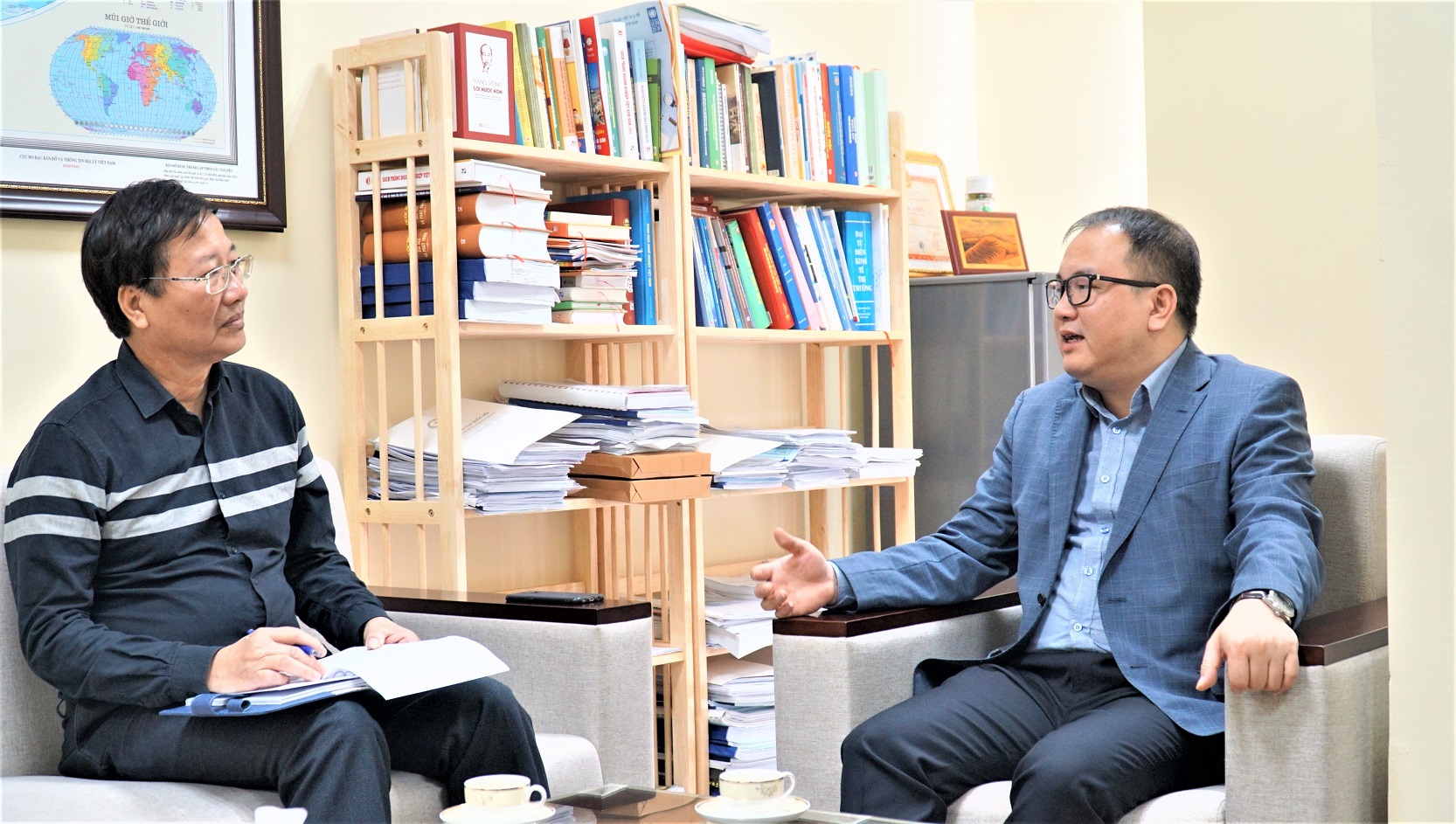
Dr. Pham Trong Nghia, full-time member of the National Assembly's Social Committee (right) talks with Elevator Magazine.
In fact, over the years, government management agencies and Vietnam Elevator Association (VNEA) have actively researched and learned about this issue.
According to Dr. Ha Tat Thang, Director of the Department of Occupational Safety, Ministry of Labour, Invalids and Social Affairs, a few key solutions are needed. That is putting into operation and complete the database of technical safety inspection for elevators; international cooperation, especially cooperation with Korea, developing a mechanism to promote the establishment of elevator safety testing facilities in Vietnam; guiding the standardization of the conformity certification process for elevator products; training human resources to test and inspect elevators; studying and amending national technical regulations and inspection procedures to be in line with reality.
Assoc. Dr. Nguyen Thi Viet Huong, Deputy Director General of the General Department of Vocational Education and Training, Ministry of Labour, Invalids and Social Affairs fully supports the development of elevator industry codes. Ms. Huong said that the process, procedures, roadmap, steps to demonstrate the implementation conditions, the General Department has assigned specialized units to conduct.
Over the past time, Vietnam Elevator Association (VNEA), and its affiliates have had many activities to promote the elevator industry to complete and develop. Accordingly, VNEA has cooperated with management agencies and many training institutions across the country to build and complete the elevator technical training program, propose to open the code for formal training in elevators.
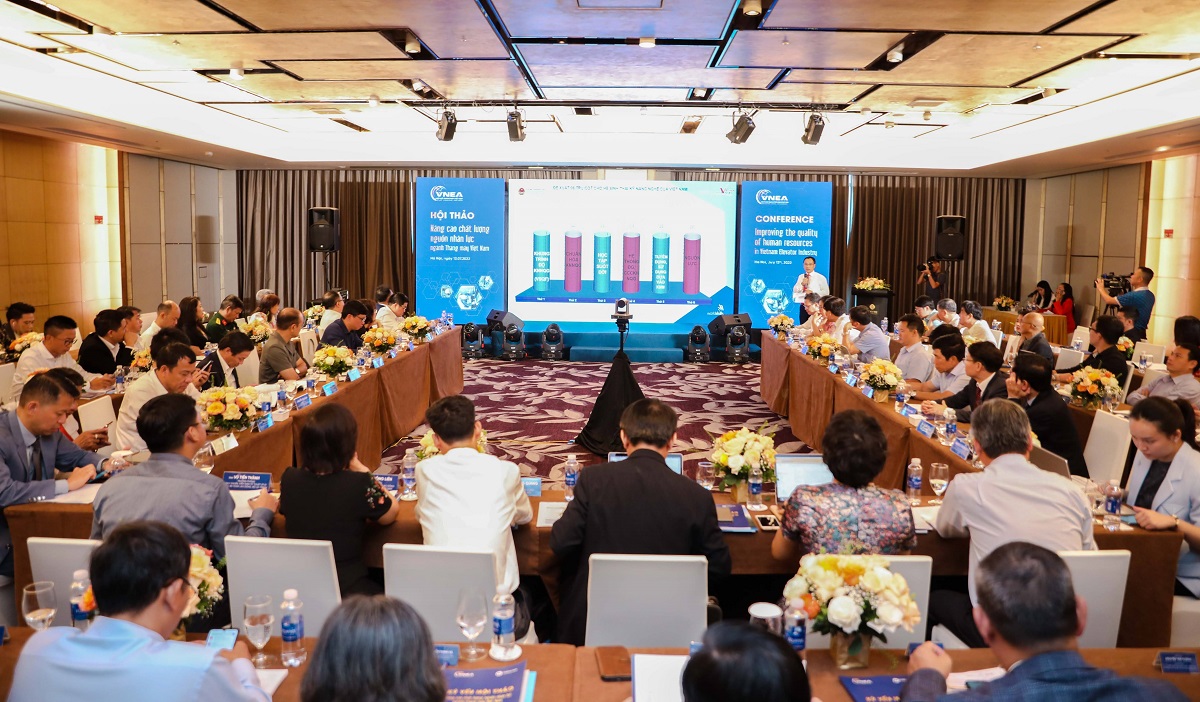
Conference "Improving the quality of human resources in Vietnam's elevator industry" organized by VNEA in July 2022.
VNEA successfully organized the Conference "Improving the quality of human resources in Vietnam's elevator industry" in July 2022, receiving high appreciation from management agencies, scientists, corporations and public.
VNEA also focuses on developing experiences, signing cooperation agreements with international and regional associations and organizations that manage elevator safety, achieving many results. Accordingly, VNEA has attended international conferences on elevators, visited and worked with Korean elevator safety management agencies...
Towards completing a strong enough legal framework to promote the development of the elevator industry, VNEA has made several recommendations on this issue.
Firstly, relevant agencies (government, professional associations) study and develop a plan to perfect the system of legal documents on occupational safety and health and product quality, national technical regulations in the direction of strict management of organizations that manufacture, import, inspect, certify, and test elevators...
Secondly, the management agency, Vietnam Elevator Association strengthens, contacts, researches, consults, and cooperates with countries with developed elevator industry, high elevator safety to develop management policies suitable for the new development stage of the industry.
Thirdly, it is recommended that management agencies and law-making agencies seriously consider and develop a roadmap to put the elevator industry in the list of conditional industries. It needs to be suitable to both improve the competitiveness of Vietnamese products in international integration, stabilize and transparent the market, and increase safety for users.
Probably, right now we must prepare “safety mechanisms” for a new stage of development in the elevator industry!



